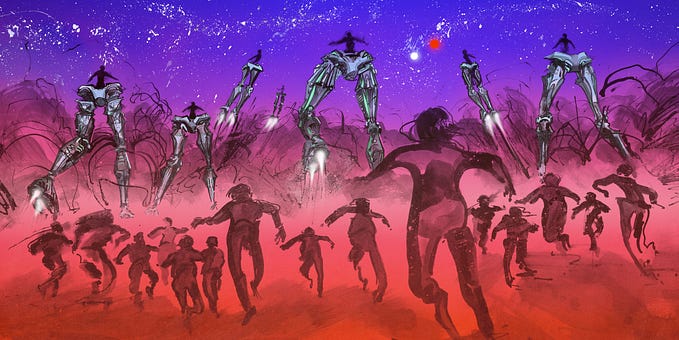Member-only story
The Robots of the Future Should Look Like Puppets
Puppeteers have been effectively animating objects for thousands of years — and they have much to teach a soulless robotics industry

 “I’ve got no strings to hold me down,” goes Pinocchio, that lying piece of wood and icon for A.I. The story of an artificial boy searching for selfhood has become a founding myth for science-fiction robots everywhere. From Blade Runner to Westworld, from Avengers: Age of Ultron to Ghost in the Shell, puppets and robots have been closely allayed in the public imagination, cutting strings and walking free.
“I’ve got no strings to hold me down,” goes Pinocchio, that lying piece of wood and icon for A.I. The story of an artificial boy searching for selfhood has become a founding myth for science-fiction robots everywhere. From Blade Runner to Westworld, from Avengers: Age of Ultron to Ghost in the Shell, puppets and robots have been closely allayed in the public imagination, cutting strings and walking free.
“Long before computers, engineers built mechanical objects designed to look and move like humans, animals, and other fantastical creatures alongside more practical machines,” says Elizabeth Jochum, a researcher in robotics and performance at Aalborg University in Denmark. “In 70 A.D., the inventor of the steam engine, Hero of Alexandria, constructed mechanical puppet theaters using pneumatics and hydraulics.”
Automata such as this developed throughout the centuries, with clockwork mechanisms giving the impression of life to the Wunderkammern curiosities of 16th-century European courts and the Karakuri puppets of Japan’s Edo period. These proto-robots pulled equally on engineering and the ancient art of making inanimate objects seem alive, entertaining audiences with mechanical birds, flute players, servants, and soldiers.
Despite this history, there’s currently a gulf between modern robotics and the art of puppetry. Jochum tells me that puppeteers think first and foremost about movement. It doesn’t necessarily matter how lifelike a puppet appears. The famous Soviet puppeteer Sergey Obraztsov would tell stories using small balls attached to the end of his fingertips. “For social robots, though, it has typically been the reverse: Humanoid robots and social robots are focused overwhelmingly on design and consider movement secondly,” says Jochum.
“Puppeteers have been around for thousands of years, and they’ve been field testing what works and what doesn’t in front of audiences all that time… and almost nobody in the…









